News & Community
Fossils and Granite in Baltimore’s Downtown Buildings Reveal Earth’s Ancient Story
The Natural History Society of Maryland leads a 12-stop, 1.5-mile tour examining the city's geological roots.
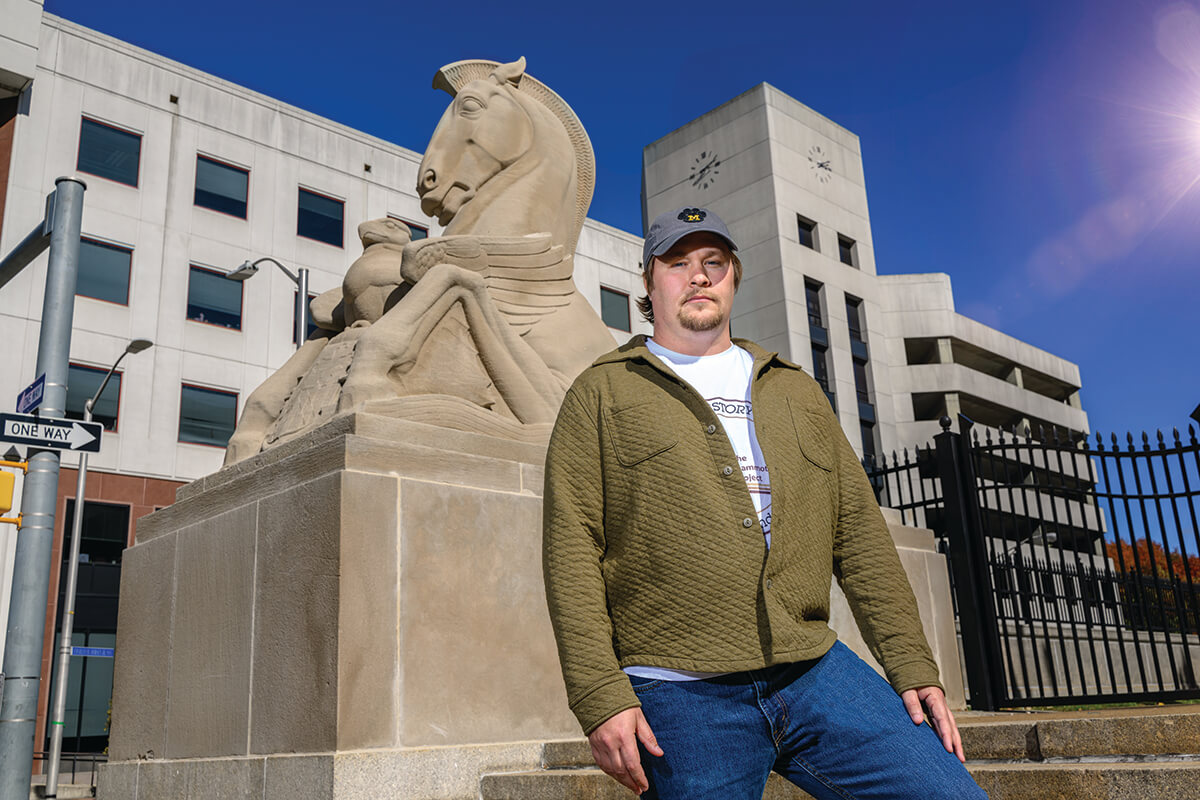
In 1926, sculptor Edmond Romulus Amateis, the American son of a noted Italian artist, won the juried competition to carve two prominently placed works outside the entrance to the then-new War Memorial Building across from City Hall. Amateis’ winning design called for a pair of mythological seahorses with scaly backbones and long aquatic tails, representing “the might of America crossing the seas in aid of its allies.”
The two stone seahorses, which incorporate eagles and ospreys as well as the city’s and state’s coat of arms, were completed in time for the dedication at War Memorial Plaza the following year. Most likely unbeknownst to Amateis is that in the very stone he used are fossils of actual sea creatures—still visible in the foundations of his epic sculptures.
“Do you see those tiny white knobs?” asks Sam Glasscock, an ocean geologist and environmental scientist, leading a small Geology Tour of Baltimore’s Building and Monuments on a recent brisk afternoon.
“Those are the fossils of crinoids. What we commonly call sea lilies,” he says, pointing to small, round, pencil-eraser-sized circles, literally all over the statue’s base. “That part that you see is the end of their tentacle, which was once attached to their bony head and the sea floor. It’s like the stem of a flower—they look more like plants, which is how they got their name.”
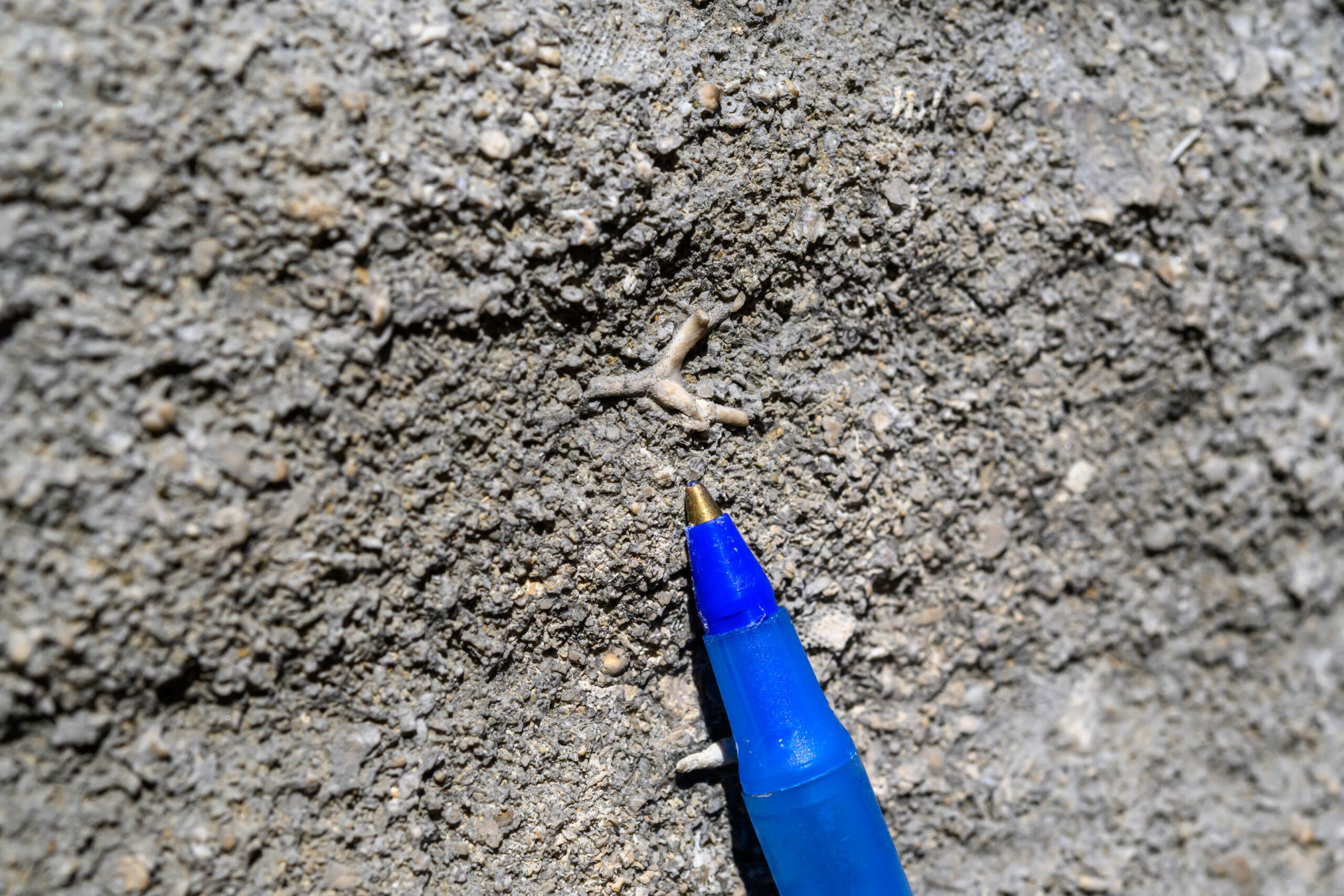
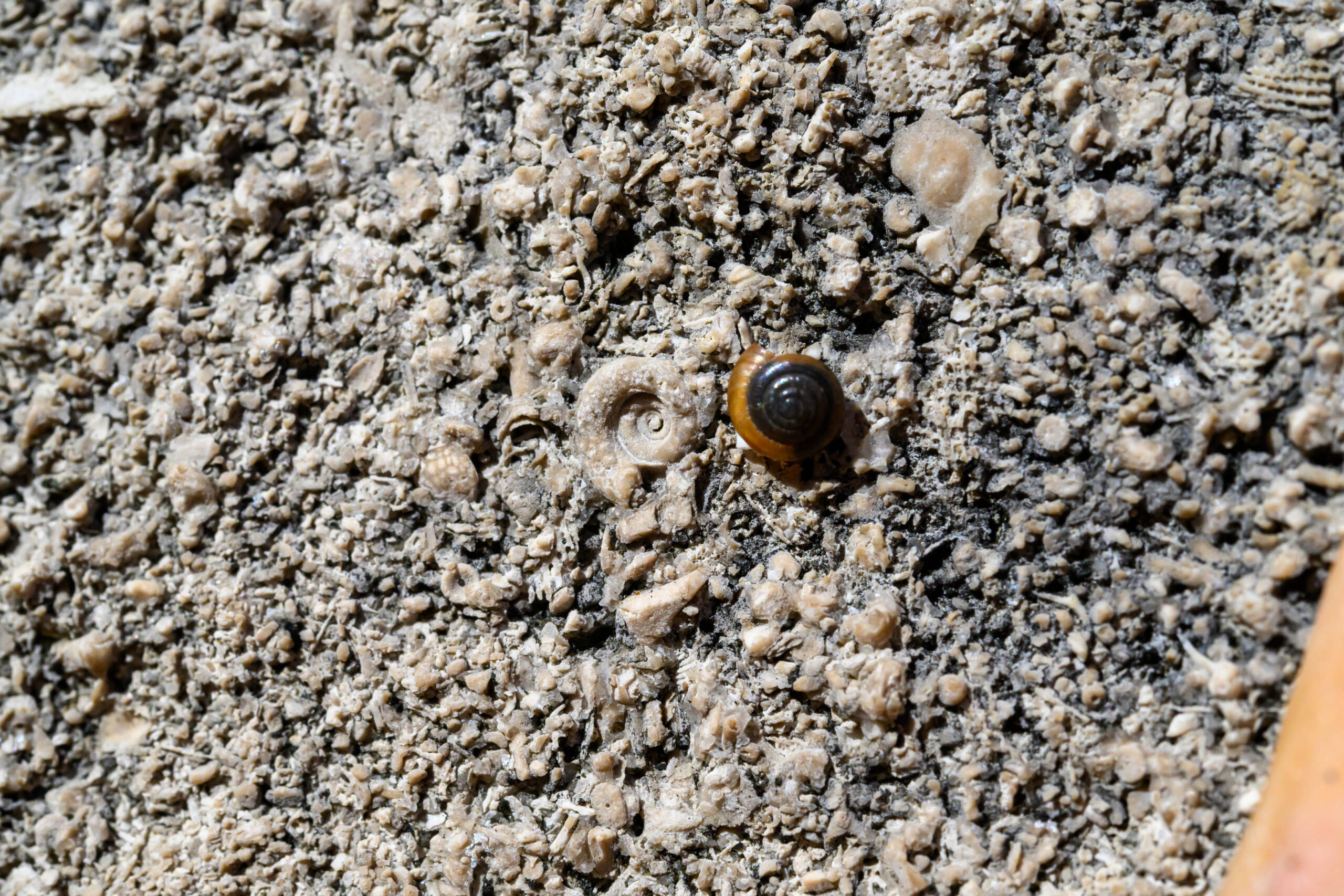
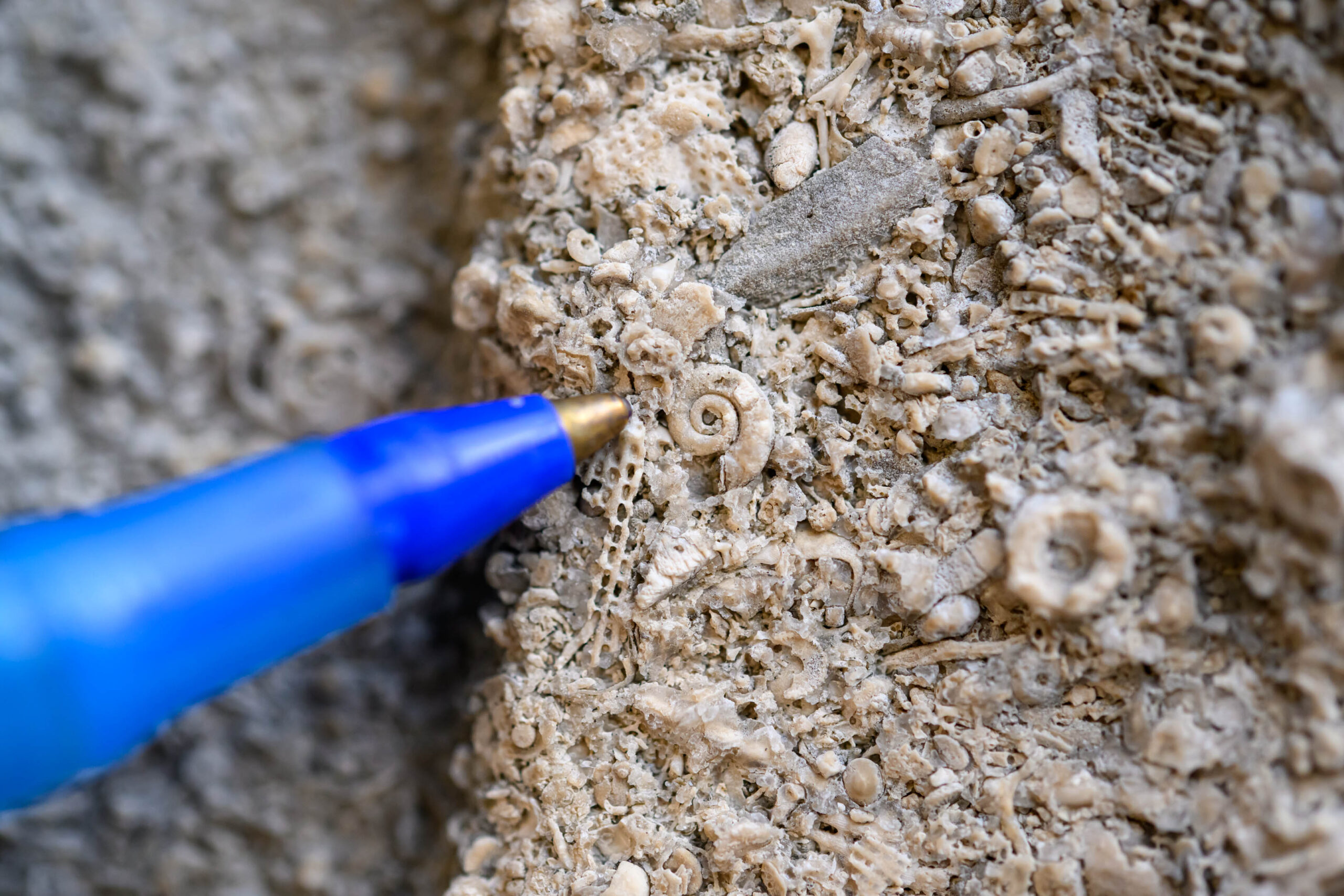
On the south-facing side of the seahorse closest to East Fayette Street, there are other visible “trace fossils” in the limestone. These longer, curved lines in the base are not fossils of a sea organism itself, but evidence of marine “worms” that once passed through the rock when it was softer sediment. All this limestone, he notes, was formed some 300 million years ago in what is today Indiana, back when the Hoosier State was covered by a shallow ocean that flourished with marine life.
Glasscock, who grew up in Missouri, began leading the tours on behalf of the Natural History Society of Maryland a little more than a year ago, not long after moving here for a position with the Environmental Protection Agency. Much of the backstory of Baltimore’s downtown buildings came from an old state Department of Natural Resources pamphlet that he’d picked up from another Natural History Society fossil fan. After some site visits, he organized a 12-stop, 1.5-mile stroll that begins at the currently shuttered Gallery Mall across from the Inner Harbor.
If you think the mall and Harborplace pavilions now seem of another era, consider that the red granite covering The Gallery exterior was imported from Taivassalo, Finland, and the Precambrian Age. It’s more than 544 million years old and was formed from the cooling of molten magma. Stop two is the corner of Calvert and Lombard streets at the TransAmerica Building, whose exterior, plaza-level side walls are covered with travertine, a type of freshwater limestone. The TransAmerica’s limestone came from the Middle East, but travertine is also still found in Italy, where it’s been quarried since Roman times for use as building and ornamental stone, including for parts of the Roman Colosseum.
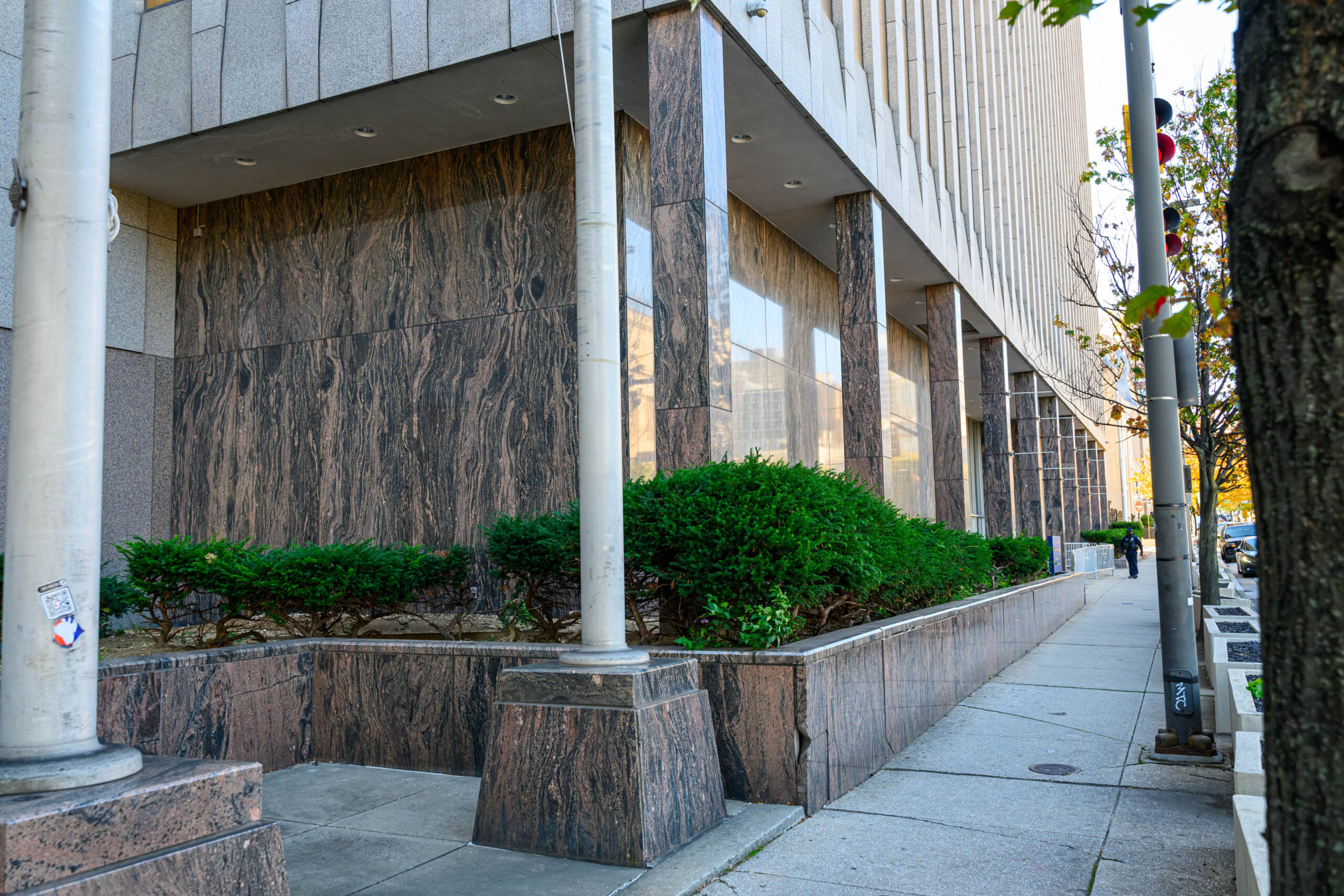
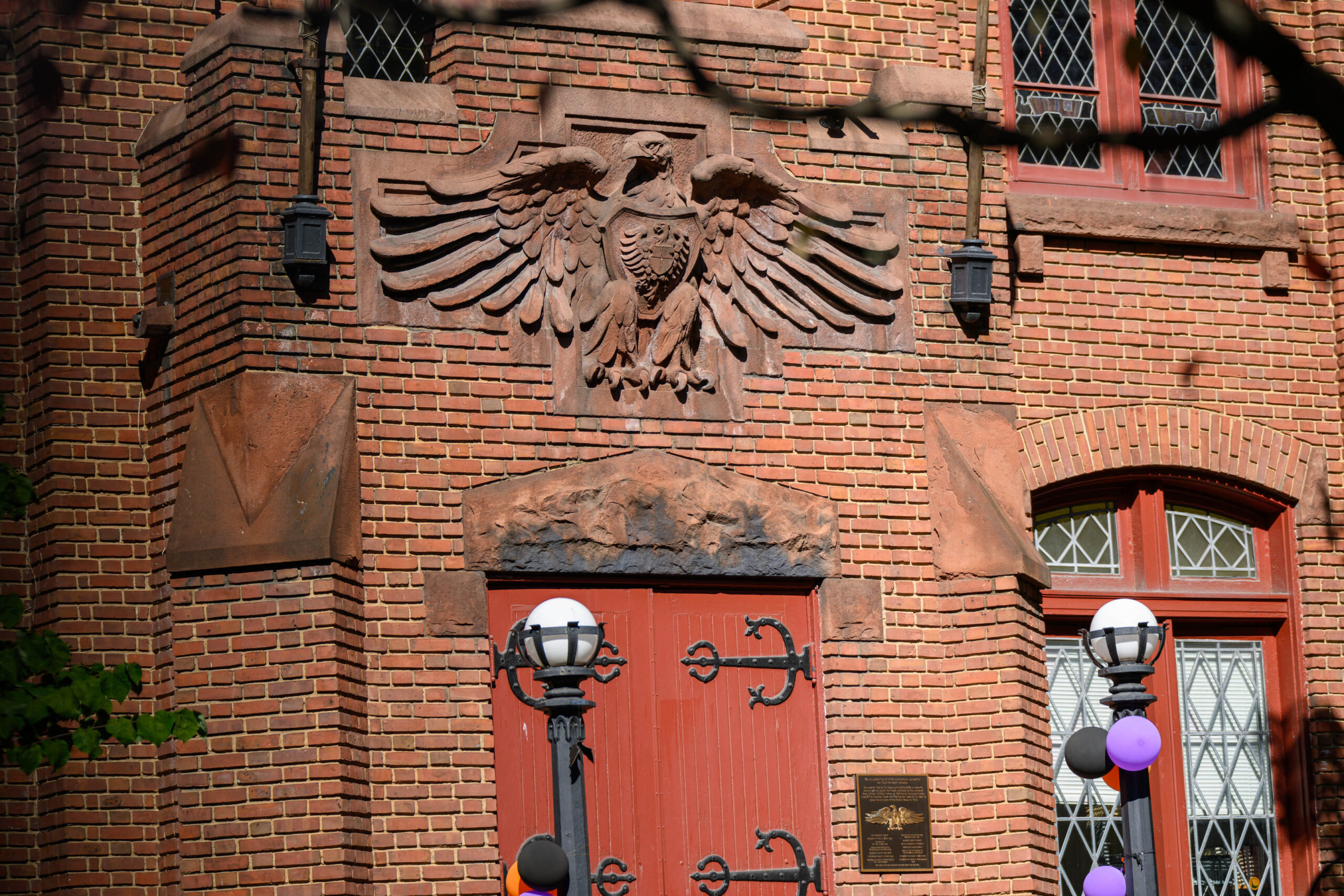
Walking east, Glasscock highlights the 1885-built Mercantile Trust & Deposit Company Building, whose extensive trim is made of late Triassic age Seneca Red sandstone—quarried near the C&O Canal in Maryland—and at least 210 million years old. It’s the same stone used to build the iconic Smithsonian Castle in D.C. City Hall, of course, is another stop. It’s faced with Baltimore County’s own Cockeysville Marble—the same stone used to construct Baltimore’s Washington Monument. In front of City Hall, tour-goers learn, the Monument to Negro Heroes of the United States has a base of dark gray, fine-grained Canadian granite. The oldest building granite in the city, however, wraps around Baltimore Police Department Headquarters at President and East Fayette.
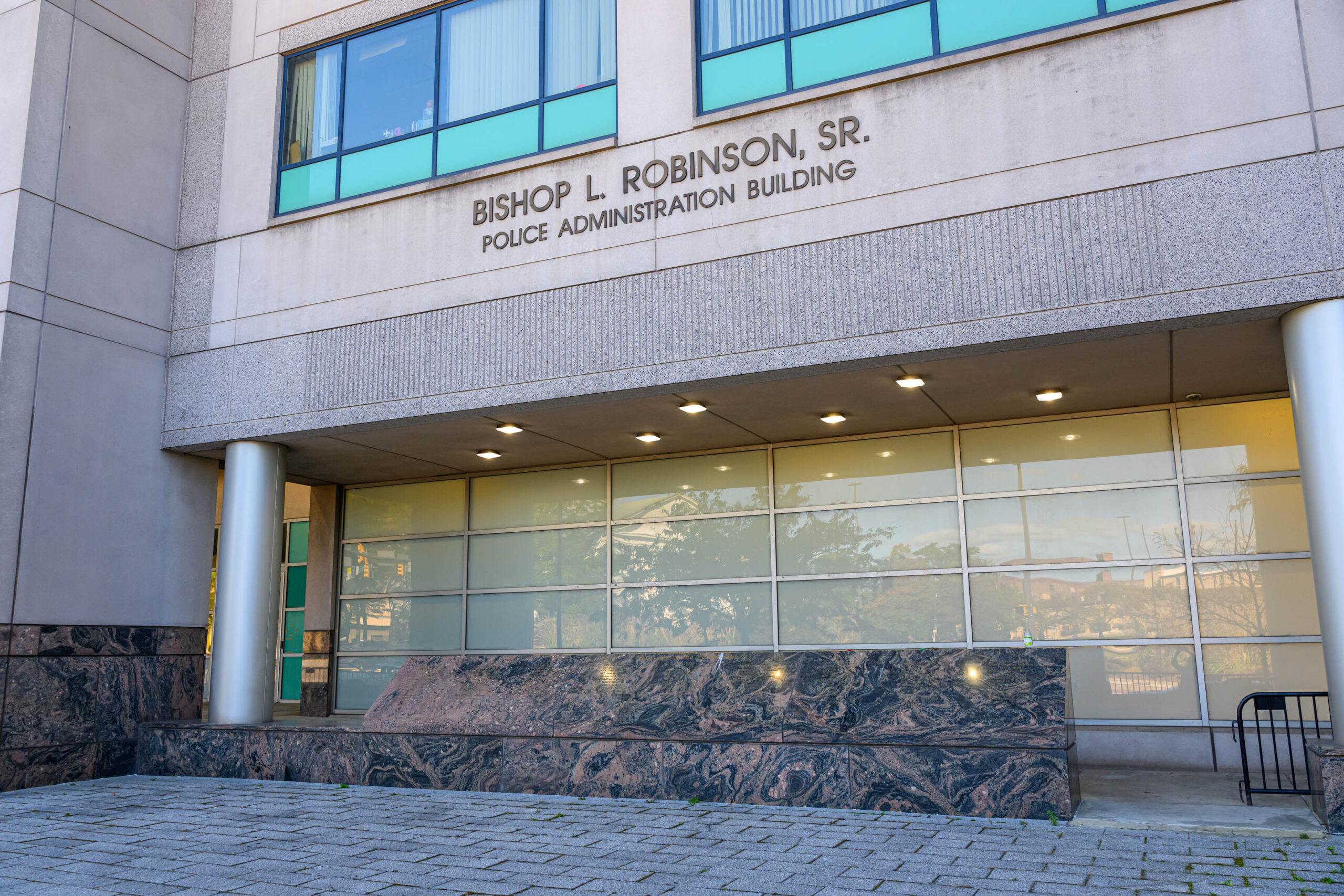
“It’s about 3.6 billion years old,” says Glasscock, gesturing toward the polished, gray and pink Morton gneiss, also known as Rainbow Gneiss. It was birthed in Morton, Minnesota, “just” a billion years after the Earth was formed. It’s one of the oldest rocks in North America.
Baltimore’s buildings and monuments, in other words, don’t just tell the history of the city and its people, but the history of the planet.
After the tour, back in front of Amateis’ mythological seahorses, Glasscock is asked what he thinks will be found hundreds of millions of years down the road that would reveal clues to our current geological epoch, the Anthropocene era. He doesn’t hesitate.
“Plastic.”